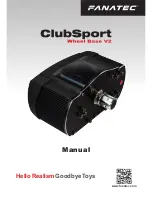
© Copyright 2010 IMS Company. All rights reserved.
An ISO 9001:2008 Registered Quality Company
4
FOREWORD
The intent of this manual is to serve as a guide fo placing your
temperature control unit in service and operating and
maintaining it properly. This manual is supplemented as
required to accommodate any special items that may have
been provided for a specific application. The written information
contained in this manual, as well as various drawings, are
intended to be general in nature. The schematics included in
this manual are typical only. Actual schematics are included in
the electrical enclosure of the unit and should be referred to for
troubleshooting and servicing of the unit. Additional copies of
drawings are available upon request. We strive to maintain an
accurate record of all equipment during the course of its useful
life. While every effort is made to standardize the design
features of these units, the various options may make it
necessary to rearrange some of the components; therefore,
some of the general drawings in this manual may differ from
your specific unit.
Specific references to current applicable codes, ordinances,
and other local laws pertaining to the use and operation of this
equipment are avoided due to their ever-changing nature. There
is no substitute for common sense and good operating
practices when placing any mechanical equipment into
operation. We encourage all personnel to familiarize themselves
with this manual's contents. Failure to do so may unnecessarily
prolong equipment down time.
It is recommended that good piping practices are followed and
that the information in this manual is adhered to. We cannot be
held responsible for liabilities created by substandard piping
methods and installation practices external to the unit.
We trust your equipment will have a long and useful life. If you
should have any questions, please contact our Tech Service
Department specifying the serial number and model number of
the unit as indicated on the nameplate.
Note: RD and RE Series units are nearly identical in internal
function and design, The RD unit however, features a self
diagnostic temperature control microprocessor panel, while
the RE unit uses a simple plug-in type controller. Applicable
control, operation, and start-up differences are noted within
this manual.
Installation
Receiving Inspection
Each unit is skid mounted and boxed or crated to protect it
during shipping. Before accepting delivery, check the box or
crate for visible damage. If damage is evident, it should be
properly documented on the delivery receipt and the box or
crate should be immediately removed to allow for detailed
inspection of the unit. Check for broken water lines, damaged
controls, or any other major component torn loose from its
mounting point. Any sign of damage should be recorded and a
claim filed immediately with the shipping company. In order to
expedite payment for damages it is important to record and
document damage. An excellent way to do this is by taking
pictures. Our Tech Service Department will provide assistance
with the preparation and filing of your claims, including
arranging for an estimate and quotation on repairs.
Rigging, Handling, and Locating Equipment
The units have a steel base platform and casters for easy
positioning. For lifting proper rigging methods must be followed
to prevent damage to components. Avoid impact loading
caused by sudden jerking when lifting or lowering the unit.
Use pads where abrasive surface contact is anticipated.
The unit is designed for indoor use. If it is necessary to store
the unit in an unheated area when not in use, be sure that all
water is drained or that an adequate amount of antifreeze is
added to prevent freeze-up of the unit. A primary concern when
designing your unit was serviceability, therefore, the unit should
be located in an accessible area.
Electrical Power
All wiring must comply with local codes and the National Electric
Code. Minimum circuit ampacities and other unit electrical data
are on the unit nameplate and are shown in the Electrical
Specification section at the back of this manual. A specific elec-
trical schematic is shipped with the unit. Measure each leg of
the main power supply voltage at the main power source.
Voltage must be within the voltage utilization range given in
Table 1.
Table 1 - Voltage Utilization Range
Rated Voltage Utilization Range
230
208 to 254
460
414 to 506
575
516 to 633
If the measured voltage on any leg is not within the specified
range, notify the supplier and correct before operating the unit.
Voltage imbalance must not exceed two percent. Excessive
voltage imbalance between the phases of a three-phase system
can cause motors to overheat and eventually fail. Voltage
imbalance is determined using the following calculations:
% Imbalance = (V
avg
– V
x
) x 100 / V
avg
V
avg
= (V
1
+ V
2
+ V
3
) / 3
V
x
= phase with greatest difference from V
avg





































